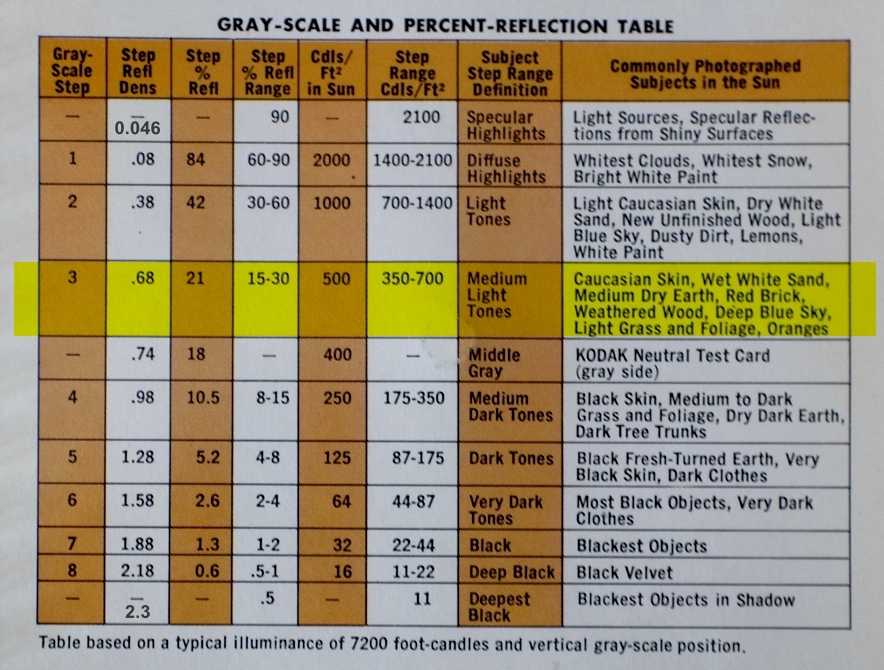We often see Zone V equated to Middle Gray but is rarely mentioned that there are other shades of gray within the Zone.
I was quite pleased today to find this illustration:
It is clear that middle gray (generally agreed to be 18%) is indeed in the middle of Zone V, but I had to know what is the range of reflectance represented by Zone V ?!
I asked AI:- it said "12% to 24%" but, with AI, it can pay to check - so I figured out how to calculate the range:
I make the Adams/Archer Zone V range of reflectance to be 12.728% to 25.456%.
Interestingly, in the similar and contemporary chart by Kodak, 18% middle gray is not in the middle of the similarly-described range of reflectances e.g. "weathered wood" ... nowhere near, in fact ...
Anybody know how to go half a stop each side of 18?



